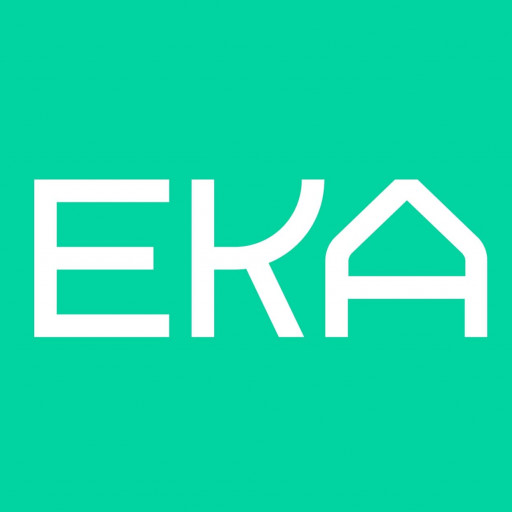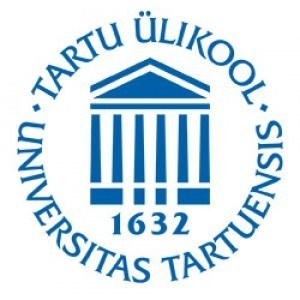Photos of university / #eka_estonian_academy_of_arts
Interaction Design at the Estonian Academy of Arts offers a comprehensive and innovative educational experience that prepares students to become skilled designers capable of creating meaningful digital and physical interactions. The program focuses on the development of user-centered design skills, emphasizing the importance of understanding human behavior, technology, and aesthetics to craft intuitive and engaging interfaces and systems. Throughout the course, students explore a wide range of topics, including user experience (UX) design, user interface (UI) design, prototyping, service design, and human-computer interaction, equipping them with the theoretical knowledge and practical skills necessary to excel in the rapidly evolving field of interaction design.
Students are encouraged to experiment with various digital tools and emerging technologies such as virtual reality, augmented reality, and interactive media to develop innovative solutions for real-world problems. The program promotes a multidisciplinary approach, encouraging collaboration across different creative fields such as graphic design, animation, and technology. Emphasis is placed on hands-on projects, internships, and collaborative workshops that enable students to apply their learning in professional contexts. The faculty comprises experienced practitioners and researchers dedicated to guiding students through the creative process, fostering critical thinking, and supporting individual artistic and technical growth.
Graduates of the Interaction Design program are equipped to work in diverse sectors including digital media, entertainment, education, healthcare, and public services. They are prepared to take on roles such as UX/UI designers, interaction designers, service designers, and experience strategists. With a strong foundation in design principles, technical skills, and an understanding of societal challenges, students emerge prepared to create innovative, user-friendly interactions that enhance people's everyday lives. The program also encourages lifelong learning and adaptability, essential qualities in a field characterized by rapid technological advancements. By choosing this program, students join a vibrant community committed to fostering creativity, innovation, and responsible design practices.
We learn design by doing it
The studies at IxD.ma are project based. We develop our designer intuition, point of view, experience and portfolio through constant iteration, guided by industry mentors—passionate practitioners, who use their real-life experience to guide you through challenging projects.
We have reduced the amount of academic lectures to the minimum. While it is essential for a cultured design leader to grasp the fundamentals of design theory, philosophy, psychology and anthropology, the majority of studies are studio-based projects on themes such as human centered design, service design, digital product design, emotional design, tangible design, social innovation etc.
Designers form a very open community — there’s an abundance of methodologies, toolsets, materials out there, readily available to use. Anyone can learn them. But it’s a matter of practice, constant iteration, to actually start thinking like a designer. This is what we are doing at IxD.ma.
We work on real life projects
Our approach is practical and experimental. In close collaboration with top industry partners — Estonian startups, government sector, telecoms, NGOs — each semester, we work on real life briefs, real life problems and real people to discover hidden possibilities of innovation and come up with forward-looking concepts that are grounded in reality.
We encourage diversity
We emphasise diversity, as it is essential to innovation. At IxD.ma, you’ll be working alongside students from many different professions, backgrounds and cultures. This creates a platform for new ideas and a mutual learning experience. After graduation you will be well equipped to run complex design development projects and to manage international multi-disciplinary teams.
Program Structure
Semester 1: Empathise
- Introduction to People-Centred Design
- Visual Interaction Design
- Service Design
- Design Storytelling
Semester 2: Build
- Emotional Design
- Tangible Design
- Business Design
- Digital Product Design
Semester 3: Innovate
- Design for Social Innovation
- Design for Emerging Themes
- Advanced Prototyping
- Immersive Experiences
Semester 4: Grow
- Degree Project
The interaction design program is open to anyone who is passionate about design. No previous professional experience or degree in design is necessary — we value diversity and our students come from very different places and backgrounds.
Admission requirements
- Application (submitted through Dream Apply/SAIS between 01.02–01.03.2021)
- 50€ application fee (paid via bank transfer)
- Copy of your Bachelor’s degree certificate or equivalent and its translation into Estonian or English (both, copies and translations have to be attested by notary).
- Copy of your Transcript of Records (and translation into Estonian or English; both copy and translation must be attested by notary).
- Certificate of foreign language skills, see the requirements HERE
- Copy of the data page of your passport or ID-card
- CV
- Short essay (max 4600 letters including spaces) elaborating on the following themes:
- How do you see the present and the future of interaction design, and how do you see your role in this.
- What do you hope to learn during the Master’s Program?
- What would you like to do after the completion of your studies?
- Display of Previous Experiences (PDF or web portfolio, max 20MB)
- Your display of previous experience should contain a few samples of work, showing your past and present experience, interests and professional capabilities. Design projects, development projects, art and hobby pieces, articles, abstracts of scientific papers, short descriptions of business or volunteering projects, etc. can be included. Basically, we want to see what you’ve been doing in your previous life, how you create, think and solve problems.
- Each sample should be illustrated and shortly described. In case of team efforts, your contribution should be clearly stated.
- The document should be presented in PDF-format (upto 20MB) or as a web portfolio. Feel free to use any file download service (WeTransfer, Dropbox, etc). If you add web links (pointing to web projects, articles, etc.) please make sure the links actually work.
- Please add your display of previous experience to your online application
More info: https://www.artun.ee/en/admissions/masters/admissions/
The Interaction Design Bachelor's program at the Estonian Academy of Arts offers diverse financing options to support students throughout their studies. Funding opportunities primarily include government supported student loans and grants, which are accessible to both Estonian and international students who meet specified criteria. The Estonian government provides student financial aid based on academic progress and financial need, enabling eligible students to reduce their financial burden. Additionally, the university participates in European Union-funded programs, such as Erasmus+, that facilitate mobility grants allowing students to undertake exchange studies across Europe, often with financial support that covers travel, accommodation, and study costs. Scholarships are also available based on academic achievement, artistic excellence, or specific demographic criteria, and students are encouraged to apply early for these awards. Private sponsorship and partnerships with industry members occasionally provide scholarships or paid internships, which serve both as financial aid and practical experience opportunities. Furthermore, the university offers work-study arrangements, enabling students to work part-time either on-campus or in connected industries to supplement their income. International students may also explore scholarships offered by their home countries or private foundations dedicated to supporting arts and design education. The program's overall financing strategy aims to ensure accessibility by minimizing financial barriers and providing a range of funding options tailored to students' diverse needs. This comprehensive approach encourages talented individuals to pursue a degree in interaction design, fostering creative innovation while ensuring financial sustainability throughout their educational journey.
What skills will I acquire during the studies?
You can shape the future. You will graduate with a portfolio, training and craftsmanship that industry is seeking. You will be an interaction designer focused on developing the next generation of products and services. You will be a User Experience Designer helping companies build meaningful products. You will join a startup team or an established company to help design the next big thing or to make the exciting experiences better.
What jobs will be available after I graduate?
- Interaction designer
- User experience designer
- Service designer
- Interface designer
- Design manager
- Design team leader
More information
http://ixd.ma
https://www.facebook.com/IxD.ma


